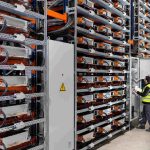Understanding the roles of power regulators, inverters, and converters is important for completing a solar power system in such a way that all components deliver optimal results. Find out how these components work and the features one should look for when contemplating a purchase.
Overview of Solar Power Systems
First off, you must estimate your average power consumption, and try to build a solar power system that can cater to your needs, and even suffice up to a 30% increase in your current needs.
Let’s start with the basics. The important parts of a solar-powered system include:
· solar panels (to harness sunlight)
· a solar regulator (for controlling and regulating the charge)
· batteries (for power storage)
· solar converter/inverter (for converting generated DC power into AC and feeding into the grid)

Solar Panels

A wide variety of solar panels are available in the market, and you can choose from roll-out solar sheets, solar shingles, or photovoltaic solar panels.
I recommend using the photovoltaic solar panels as they’re quite cheap, yet efficient.
Things to Consider While Buying and Installing Solar Panels
For residential needs, you must pick a solar panel that can deliver at least 250 watts of direct current at its peak. It might be a great idea to pick up two of them, to have a back-up solution to the grid system.
Some panels come with a rail mounting system, which can be used to fix the solar panel to roof of your house. Some folks believe that southwest-facing roof is the ideal direction, but I’d say that direction doesn’t matter, so long as there’s no shade on your roof.
I recommend using the photovoltaic solar panels produced by Waree Energies.
Completing the System – Solar Power Regulators
A solar panel regulator is the heart of a solar-powered system. This is basically your charge controller, responsible for converting solar energy into electricity to charge the battery or the inverter in the system. It’s important to pick a solar regulator that provides reliable solar battery charging, diversion regulation, and load control.
Morningstar’s TriStar three-function controller is one good option that works at 45-60A and 12-48V, and also includes a remote temperature sensor, optional meter, as well as a remote meter.

Inverter/Converter
A solar power inverter converts solar energy into electric energy that you can utilize in your home. In the integration process, you need to connect each solar panel in series, but the problem is that you get DC power from the panels, while you require AC at home (don’t you?).
A solar power converter helps in getting this job done, and the size of the converter/inverter that you will require will primarily depend upon the peak load of power consumed in your home; you can find it out by adding up the wattage of all the main appliances that you use, such as the AC, refrigerator, TV, microwave, washing machine, dishwasher etc.
Integration of a solar system that still uses grid power doesn’t necessary require an external battery for storing the charge, and an inverter should serve the purpose.
Therefore, a power inverter needs to be connected to convert DC to AC power. We’re currently not considering the battery part, and assuming that you’re using the grid supply alongside the solar power system.
A real-time microcontroller sits in the middle of the inverter that controls very precise algorithms required for inverting DC voltage into AC.
I recommend using Texas Instruments’s C2000 inverter, whose block diagram is shown above.
Finishing the Installation
Having seen how you should fix a solar panel, and solar power inverter, it’s time to finish off the installation. You’ll have to run power from the inverter into the electrical service panel or the breaker box of your home, which will distribute power to various electric loads through the existing household wiring.
You may want to insert another box next to your service panel, so that it may be used as solar panel feed; adding a switch to it will allow you to shut it down as and when required.
When there’s bright sunlight and your power consumption is low, excess power produced by your solar power system will flow into the grid, causing your electricity meter to run backwards.
However, it’s important to note that you can’t cause your meter to show a zero reading. And, of course the good news is that you can claim the Federal tax credits on your 1040 Tax Form.
So, there you have a quick guide to build a solar powered system; go ahead and try it out, and include your comments below to let me know if you face any difficulties.




